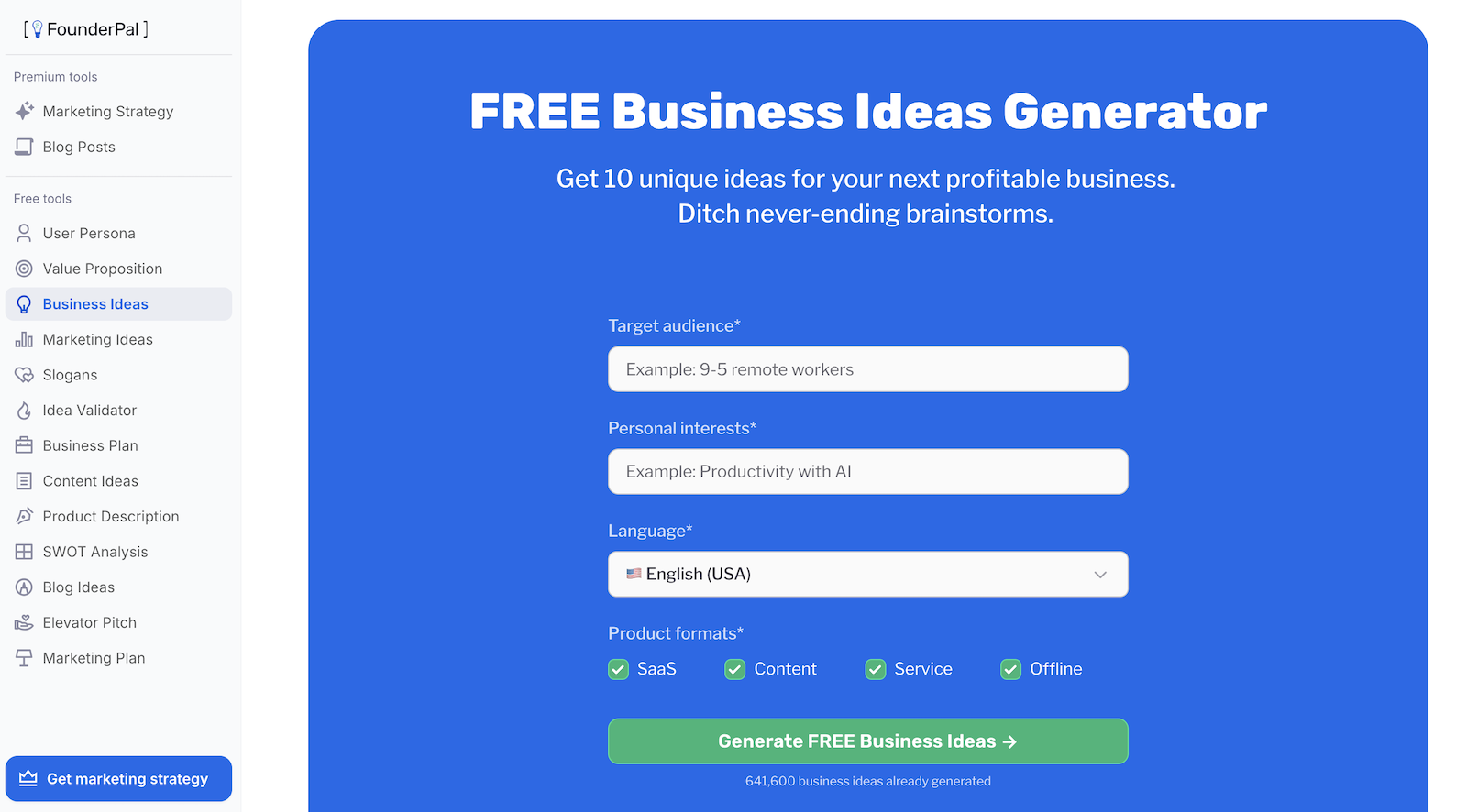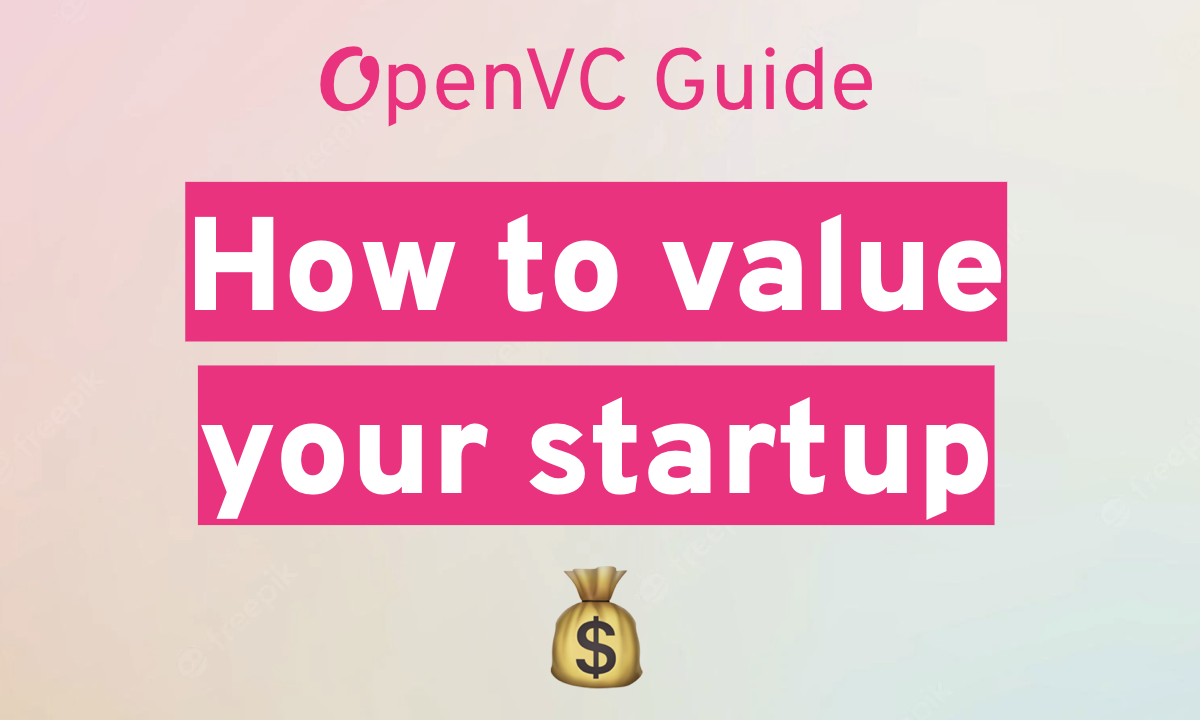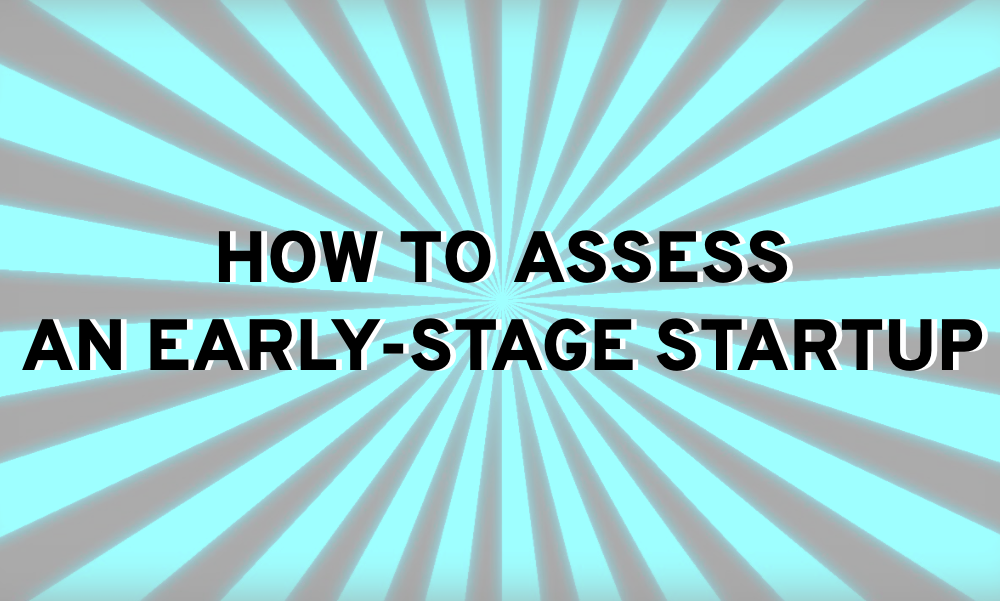You know the story. An entrepreneur comes up with a unique idea, one that changes the world. They start a company and before they know it, what was once a simple idea has become part of the lingo.
WhatsApp me.
Call an Uber.
We got an Airbnb.
Check Yelp.
Google it.
But where do these ideas come from? Is there a process? How does one even conceive of a startup idea? More importantly, will it even work?
In this article, we are going to break it all down in the hope that you can start generating your own ideas for the next great startup.
Table of Contents
Generating startup ideas is hard
Have no illusions about generating startup ideas. They are difficult to come up with. If you are expecting to have a lightbulb moment as soon as you begin to think about the next great startup idea, think again.
You may run into what Paul Graham defines as “sitcom” startup ideas.These are ideas given to characters on a television show whose story was to launch a business. The idea is often plausible for the show but terrible in reality.
So what are the top five sources of startup ideas?
What are the frameworks to follow?
What methods should you use?
We got you covered.
The top five sources of startup ideas
In his book, Passion & Purpose: Stories from the Best and Brightest Young Business Leaders, Daniel Gulati, spent a month investigating where successful founders generated their ideas. This was the culmination of surveying fifty founders in every stage of a startup, from pre-seed to exit. The results of the survey are as follows:
1. The founder experienced a pain point in their life and wanted to provide a solution.
Kent Plunkett founded Salary.com when he was hiring a secretary and was unsure of the proper compensation. The result? He built the world’s largest compensation information database which went public in 2007 at a valuation of $175M.
2. The founder met someone talented and they started a company together.
Bill Gates was friends with Paul Allen before they started Microsoft. Jerry Yang and David Filo were Stanford graduate students before launching Yahoo. Larry Page met Sergey Brin while at Stanford. The list goes on of people who met each other at the right place and the right time.
3. The founder possessed a special skill or passion. They transformed it into a business.
Alea von Tobel had a passion for helping Millennials and a skill of breaking down sophisticated financial matters. She combined her passion and skill to found LearnVest, raising over $40 million and was later acquired by Northwestern Mutual Life.
4. The founder worked in a specific industry for a long period of time and saw a customer need that they could fulfill.
Some founders aren’t born entrepreneurs. Some spend years working in an industry until they discover a new opportunity to change that industry. Anna Wojcicki, CEO and co-founder of 23andMe, spent years working in the healthcare investment and biotechnology fields. Before she launched her company, people had to go to their doctor to get information about their genome, a tedious and time consuming process. With 23andMe, the product could be delivered directly to the customer.
5. The founder researched multiple ideas, narrowed it down to one, and pursued it.
Ideas are plentiful, but narrowing it down to one single idea is what matters.. Fortunately, it has never been easier to discover problems and brainstorm solutions with other like minded people. Sites such as Kernel and Polywork offer collaborative communities of people looking to connect, build, and brainstorm while classic sites for research such as Hacker News and Quora are still great options. And don’t forget about Reddit, Facebook and LinkedIn groups, Twitter communities, Slack channels, and Discord. The feedback you receive may lead you to find the next great problem to solve and maybe even your first customers.
Proven frameworks for generating startup ideas
Antler global partner Oscar Westergård has ten frameworks for generating startup ideas.
- Think globally, act locally. Bring a specific product or service available in another market to your own or vice versa.
- Spend 21 days recording every problem you encounter. Keep a notebook of all problems you encounter and you may find the inspiration to solve it and profit while doing so.
- Do a SWOT analysis on existing companies. A SWOT (Strengths, Weaknesses, Opportunities, and Threats) analysis allows you to understand your competition and look for opportunities. Can you offer something better? More affordable?
- Use the Jobs-to-be-done framework. The jobs-to-be-done framework is a framework for developing business ideas. What is the customer’s goal and how can you help them achieve it via a product or service?
- Uncover gaps by observing an audience. What problems are customers facing? What are the available solutions? Can you provide a better solution?
- Search for an industry that is broken. Broken industries are often filled with large players who never had to innovate. Can you be the innovative company that tips the scales?
- Look for technological shifts. What is next in technology? What will everyone be using years from now? More importantly, can you take advantage of this new technology by offering a unique product and service to early adopters?
- The 10x rule. What existing business can you 10x? Whether it is providing an easier, cheaper, or better solution, there are opportunities out there.
- Find opportunities in non-obvious markets. Look for opportunities in markets that are overlooked or even boring. There is room for you to create something remarkable provided you can find the opportunity.
- Iteration as innovation. Forget launching something totally new. Instead, iterate on something that already exists. Take a boring idea and make it exciting.
Above all, make sure to ask yourself the right questions. Paul Graham said it best;
“When you have an idea for a startup, ask yourself: who wants this right now? Who wants this so much that they'll use it even when it's a crappy version one made by a two-person startup they've never heard of? If you can't answer that, the idea is probably bad.”
AI-powered startup Idea Generators
If you are still at a loss for startup ideas, there are a variety of AI-powered idea generators to help you out.
ChatGPT

OpenAI’s ChatGPT is an advanced tool for generating startup ideas based on your interests or market needs. To use it, start by entering prompts focused on industries or problems you’re passionate about. For instance, if you input “how to find startup ideas in health tech,” GPT-4 might suggest solutions like mental health apps or remote diagnostic tools.
Experimenting with specific prompts—such as “early-stage ideas in sustainable fashion”—can yield tailored suggestions, from product concepts to potential customer segments. GPT-4’s ability to provide detailed, relevant ideas makes it a practical way to explore niches and identify unique opportunities in today’s market.
Ideanote

Ideanote allows you to quickly find startup ideas by filling in basic information about the kind of startup you envision, such as industry or target audience. Once you input these details, Ideanote generates a range of ideas tailored to your criteria. To get the most from Ideanote, focus on entering specific details that match your interests or skillset. For example, if you’re interested in green tech, filling in details about sustainability could yield ideas relevant to eco-friendly solutions, helping you discover where your strengths align with potential markets.
Founderpal

FounderPal's Business Ideas Generator uses AI to help aspiring entrepreneurs brainstorm startup ideas quickly and easily. To start, simply enter a keyword or industry you’re interested in, like “fintech” or “sustainability.” FounderPal will generate tailored startup concepts based on market trends and common challenges in that sector.
For example, if you’re interested in how to find startup ideas in the food tech space, FounderPal might suggest innovative solutions for food delivery, plant-based alternatives, or meal planning tools. The generator also provides brief descriptions and insights, helping you understand each idea's potential. FounderPal is ideal for discovering unique concepts and refining your startup vision based on industry insights and market demand.
TRUiC

TRUiC’s Business Ideas Tool is a practical resource for generating tailored startup ideas based on your goals, skills, and interests. After answering a few quick questions about your background and industry preferences, the tool delivers business ideas that align with your strengths.
The tool’s UI is user-friendly and straightforward: you start by selecting categories or industries you’re interested in, such as technology, health, or marketing. You can further narrow down results by specifying your skills, preferred business type (online, service-based, etc.), and even initial budget. Once you submit your preferences, TRUiC’s algorithm presents you with a curated list of startup ideas, each displayed with a short description, expected costs, and links to helpful resources. This intuitive setup makes it easy to quickly explore ideas that suit your experience and resources, simplifying the journey from brainstorming to practical action.
Avoid common mistakes
According to Y Combinator partner Jared Friedman, founders should avoid the following startup idea mistakes:
- Understand Your Audience: Identify your target customers and learn about their needs, preferences, and pain points. You can use tools like Google Trends, social media, and online surveys to collect insights.
- Start with a problem, not a solution. If you have a solution to a problem that doesn’t exist, your startup won’t get far.
- Start with a problem, not a solution. If you have a solution to a problem that doesn’t exist, your startup won’t get far.
- Don’t believe there aren’t any good startup ideas out there. The world is full of problems that need solutions.
Once you have your idea, you should recognize how new it is.Too new and it could be too risky. Too much of a copy of another idea and people won’t accept it. NFX provides this great table on where your startup idea should be.
Founders should try and keep their idea in the new energy sweet spot. It also pays to have a truly great idea rather than a mediocre idea.
Why?
Because life, energy, time, and resources are short. You want to spend your time on creating something that is exceptional. The worst thing a founder can do is come up with a mediocre idea and spend years and their limited resources pursuing it.
A little help
If you still need a little help, Y Combinator has a page specifically requesting startups in a variety of different categories. This includes everything from transportation to robotics.
Perhaps you are working on solving a problem in one of these categories or already have a good idea but didn’t think anyone would be interested. You should never give up on what seems to be a bad idea because you lack the support of your peers. Continue brainstorming and building. You will never know what you will stumble across.
What to do once you have an idea
After you've come up with a promising startup idea, it’s essential to follow a series of practical steps to ensure it has potential and is worth pursuing further. Here’s a roadmap to help you validate and develop your idea:
1. Conduct Market Research
- Understand Your Audience: Identify your target customers and learn about their needs, preferences, and pain points. You can use tools like Google Trends, social media, and online surveys to collect insights.
- Estimate Costs and Pricing: Determine the cost of delivering your product or service and set a pricing strategy that aligns with market expectations and covers expenses.
2. Validate the Idea with Potential Customers
- Run Surveys or Interviews: Connect directly with potential users and gather feedback on your concept. Ask them about their problems and how your solution might help.
- Estimate Costs and Pricing: Determine the cost of delivering your product or service and set a pricing strategy that aligns with market expectations and covers expenses.
3. Develop a Minimum Viable Product (MVP)
- Define Core Features: Focus on building the most essential features first. Keep it simple and prioritize functionality over perfection.
- Estimate Costs and Pricing: Determine the cost of delivering your product or service and set a pricing strategy that aligns with market expectations and covers expenses.
4. Create a Business Model
- Outline Revenue Streams: Decide how you’ll generate revenue—subscriptions, one-time purchases, ads, or another model. Think about scalability and profitability.
- Estimate Costs and Pricing: Determine the cost of delivering your product or service and set a pricing strategy that aligns with market expectations and covers expenses.
Once you have some traction - what's next?
Plan Your Funding Strategy
- Tell Your Story: Use your pitch deck to convey a clear and captivating story about your startup. Start with the problem you're solving, then present your solution, market potential, and competitive edge. Investors should feel the significance of your idea right away. to convey a clear and captivating story about your startup. Start with the problem you're solving, then present your solution, market potential, and competitive edge. Investors should feel the significance of your idea right away.
Create a Compelling Pitch Deck
- Tell Your Story: Use your pitch deck to convey a clear and captivating story about your startup. Start with the problem you're solving, then present your solution, market potential, and competitive edge. Investors should feel the significance of your idea right away.
- Highlight Key Metrics and Traction: Include any relevant metrics, customer testimonials, or early traction to demonstrate that your concept has momentum. Metrics like user growth, revenue, or product engagement can go a long way in building investor confidence.
Search for the Right Investors
- Find Investors Aligned with Your Vision: Identifying investors who have experience in your industry and share your startup's mission can increase your chances of securing funding and valuable mentorship.
- Use OpenVC to Simplify Your Search: OpenVC provides a powerful investor database that allows you to filter by investment criteria, industry focus, location, and check sizes. By targeting investors who are already interested in your niche, you can save time and increase the effectiveness of your outreach.
Conclusion
Coming up with an idea is simple, but coming up with a truly great idea that can transform the world and result in a major business is truly difficult. We turn to Paul Graham to end this article with a major piece of advice for generating a great startup idea;
“The way to get startup ideas is not to try to think of startup ideas. It's to look for problems, preferably problems you have yourself. The very best startup ideas tend to have three things in common: they're something the founders themselves want, that they themselves can build, and that few others realize are worth doing. Microsoft, Apple, Yahoo, Google, and Facebook all began this way.”
Find your ideal investors now 🚀
Browse 5,000+ investors, share your pitch deck, and manage replies - all for free.
Get Started










